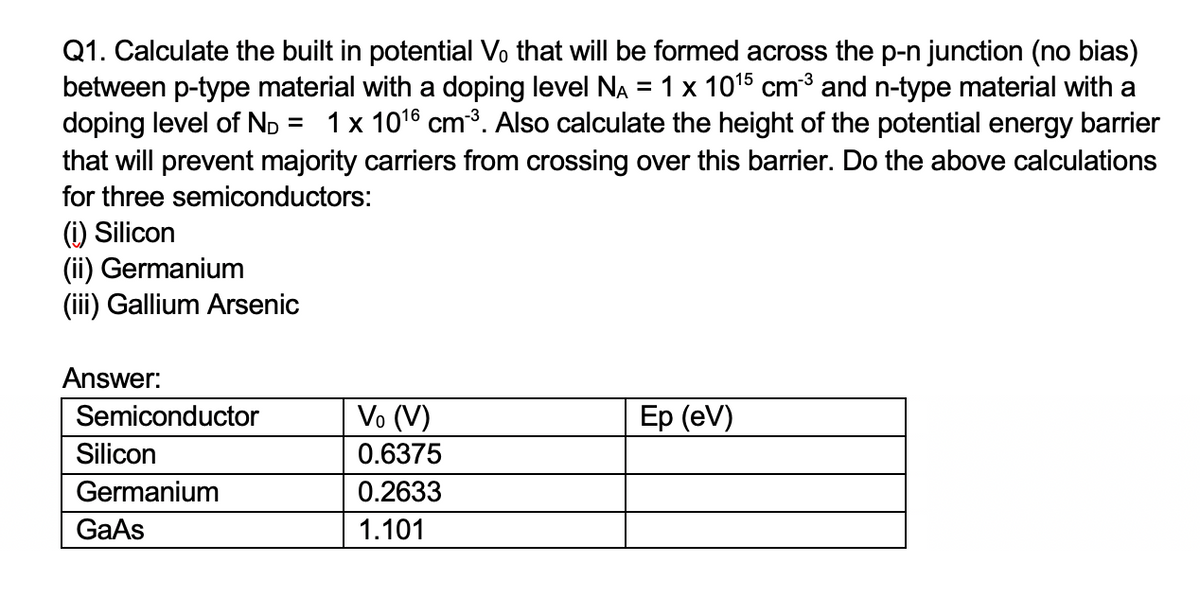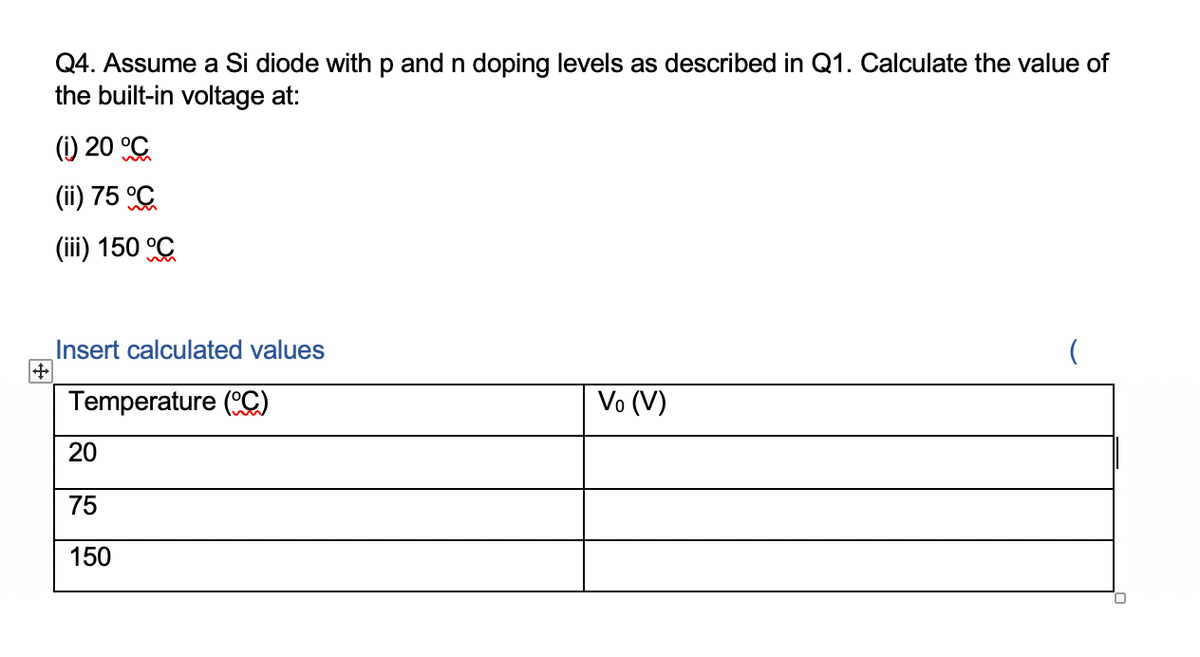Q4. Assume a Si diode with p and n doping levels as described in Q1. Calculate the value of the built-in voltage at: (1) 20 °C (ii) 75 C (iii) 150 C Insert calculated values Temperature (C) Vo (V) 20 75 150
Q4. Assume a Si diode with p and n doping levels as described in Q1. Calculate the value of the built-in voltage at: (1) 20 °C (ii) 75 C (iii) 150 C Insert calculated values Temperature (C) Vo (V) 20 75 150
Chapter59: Motor Startup And Troubleshooting Basics
Section: Chapter Questions
Problem 12SQ: How is a solid-state diode tested? Explain.
Related questions
Question
Question 4 in photo please, i also attached Q1 with the Si diode with p and n doping levels

Transcribed Image Text:Q1. Calculate the built in potential Vo that will be formed across the p-n junction (no bias)
between p-type material with a doping level NA = 1 x 1015 cm3 and n-type material with a
doping level of ND = 1x 1016 cm3. Also calculate the height of the potential energy barrier
that will prevent majority carriers from crossing over this barrier. Do the above calculations
for three semiconductors:
(i) Silicon
(ii) Germanium
(ii) Gallium Arsenic
Answer:
Semiconductor
Vo (V)
Ер (eV)
Silicon
0.6375
Germanium
0.2633
GaAs
1.101

Transcribed Image Text:Q4. Assume a Si diode with p and n doping levels as described in Q1. Calculate the value of
the built-in voltage at:
(1) 20 C
(ii) 75 °C
(iii) 150 C
Insert calculated values
Temperature (C)
Vo (V)
20
75
150
Expert Solution
This question has been solved!
Explore an expertly crafted, step-by-step solution for a thorough understanding of key concepts.
Step by step
Solved in 7 steps with 5 images

Follow-up Questions
Read through expert solutions to related follow-up questions below.
Follow-up Question
For Q4 (i) and similar thing to (ii) and (iii)
When calculating ni1/ni2 = (300/293.15)^1.5 I got ni2 = 1.035ni1 and don't know why you guy got 0.9659ni1 is there anything that I miss?
Solution
Knowledge Booster
Learn more about
Need a deep-dive on the concept behind this application? Look no further. Learn more about this topic, electrical-engineering and related others by exploring similar questions and additional content below.Recommended textbooks for you


Electricity for Refrigeration, Heating, and Air C…
Mechanical Engineering
ISBN:
9781337399128
Author:
Russell E. Smith
Publisher:
Cengage Learning

Delmar's Standard Textbook Of Electricity
Electrical Engineering
ISBN:
9781337900348
Author:
Stephen L. Herman
Publisher:
Cengage Learning


Electricity for Refrigeration, Heating, and Air C…
Mechanical Engineering
ISBN:
9781337399128
Author:
Russell E. Smith
Publisher:
Cengage Learning

Delmar's Standard Textbook Of Electricity
Electrical Engineering
ISBN:
9781337900348
Author:
Stephen L. Herman
Publisher:
Cengage Learning